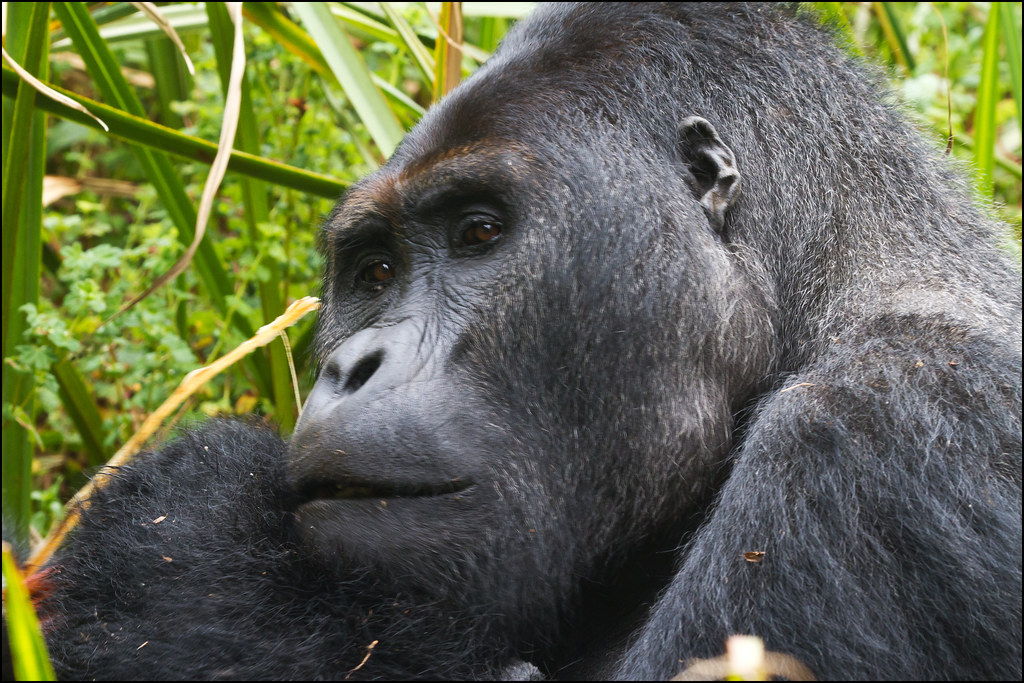Fascinating Facts About the Eastern Lowland Gorillas
The Eastern Lowland Gorillas, also known as Grauer’s gorillas, are one of the world’s most remarkable yet lesser-known primates. Found only in the dense tropical forests of the eastern Democratic Republic of Congo (DRC), these great apes are a subspecies of the Eastern gorilla and are distinct from their better-known cousins, the mountain gorillas. Their incredible strength, social complexity, and vulnerable status make them both awe-inspiring and critically important to conservation efforts.
Eastern Lowland Gorillas are the largest of all gorilla subspecies. Adult males, known as silverbacks, can weigh up to 250 kilograms (550 pounds) and stand about 1.7 meters (5.6 feet) tall when upright. Their build is broader and more muscular than that of mountain gorillas, giving them immense strength. Despite their size, they are generally peaceful and spend much of their day feeding or resting.
A Unique Home in Congo’s Forests
These gorillas inhabit the lowland tropical forests and montane jungles of eastern DRC, particularly in areas like Kahuzi-Biega National Park and Maiko National Park. Unlike the mountain gorillas that live at higher elevations, Eastern Lowland Gorillas prefer lower-altitude forests that are rich in fruit-bearing trees. Their range was once vast, but due to human encroachment and instability in the region, their habitat has shrunk significantly.
A Diet Rich in Fruit and Vegetation
Eastern Lowland Gorillas are primarily herbivores with a diet that includes fruit, leaves, bark, and stems. Unlike mountain gorillas that mostly consume leaves due to the lack of fruit in their highland environment, Grauer’s gorillas enjoy a more fruit-heavy diet. This difference in diet contributes to their larger size and slightly different social behaviors.
Complex Social Lives
These gorillas live in cohesive family groups led by a dominant silverback male. A typical troop may include several females and their offspring. The silverback is responsible for protecting the group and making decisions such as when to feed, rest, or move. Bonds between members are strong, especially between mothers and infants, and grooming is a common activity that strengthens social ties.
Critically Endangered and Under Threat
Eastern Lowland Gorillas are listed as Critically Endangered by the IUCN. Their population has declined by more than 75% in just a few decades. The biggest threats include habitat destruction due to logging and mining, poaching for bushmeat, and the ongoing armed conflicts in eastern Congo. Conservation efforts are ongoing, but instability in the region makes it difficult to enforce protections consistently.
Research and Conservation Progress
Kahuzi-Biega National Park is one of the few places where visitors can trek to see Eastern Lowland Gorillas in the wild. Research conducted in this park has greatly contributed to our understanding of Grauer’s gorilla behavior, communication, and social dynamics. Conservation organizations are working closely with local communities to promote ecotourism, education, and protection for these endangered apes.
Essential to Forest Ecosystems
Like other great apes, Eastern Lowland Gorillas play a crucial role in their ecosystems. As seed dispersers, they help regenerate forests by spreading seeds from the fruits they consume. Their presence supports the health of the broader forest environment, which in turn benefits countless other species and the global climate.
Final Thought
Eastern Lowland Gorillas are powerful, intelligent, and socially intricate animals that deserve far more attention than they often receive. With their survival hanging in the balance, these gorillas stand as a symbol of the urgent need to protect wild spaces and support sustainable conservation. Seeing them in their natural habitat remains one of the most profound wildlife encounters anyone can experience.





